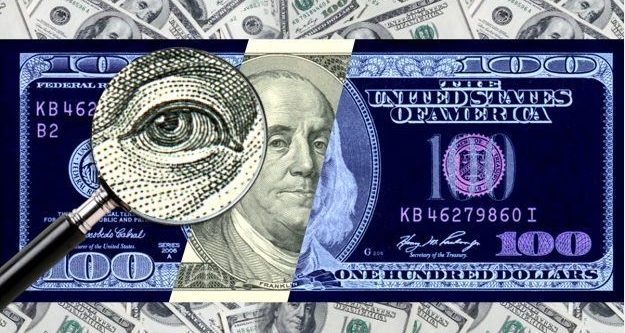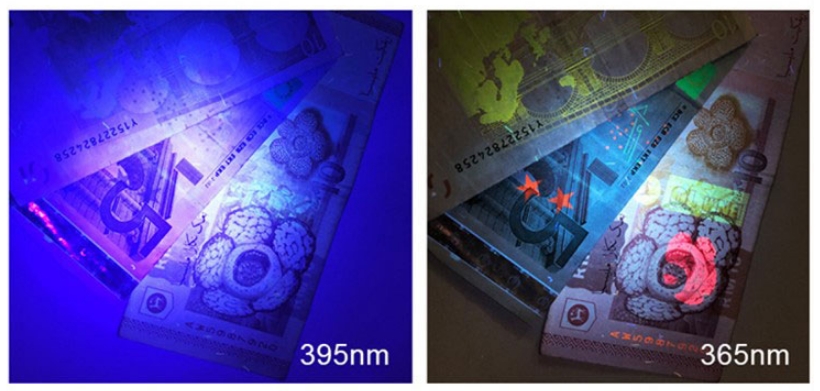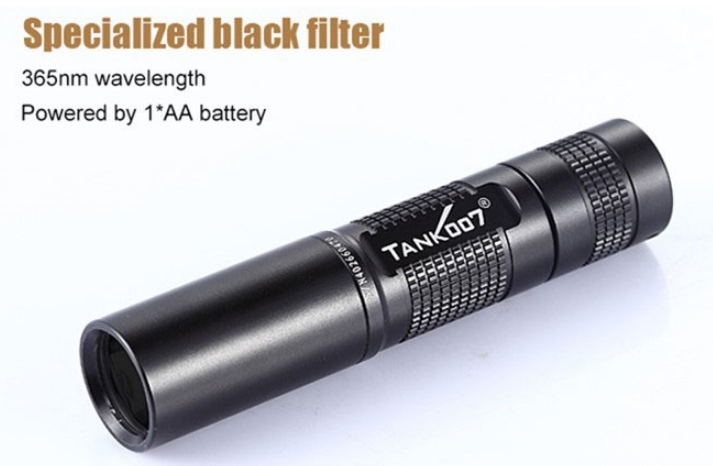The post The Science Behind UV Light and Its Application in Currency Verification appeared first on Tank007.
]]>1. The Science Behind UV Light
Ultraviolet light is electromagnetic radiation with a wavelength shorter than visible light but longer than X-rays. It is categorized into three types:

| Type | Wavelength Range | Applications |
|---|---|---|
| UV-A | 315-400 nm | Currency verification, forensic analysis, and tanning lamps |
| UV-B | 280-315 nm | Skin treatment and sterilization |
| UV-C | 100-280 nm | Germicidal purposes, air, and water purification |
For currency verification, UV-A light (between 365-395 nm) is commonly used because it reveals fluorescent security features without damaging the banknotes.
2. Security Features on Banknotes Revealed by UV Light
Modern banknotes are designed with advanced security features that fluoresce or absorb UV light. Below are some examples:

| Feature | Description | Reaction to UV Light |
|---|---|---|
| Fluorescent Fibers | Tiny fibers embedded into the paper during manufacturing. | Glow in specific colors like red, green, or blue. |
| Security Threads | Thin strips embedded or printed within the note. | Appear as a continuous line glowing under UV light. |
| Invisible Ink | Patterns or symbols printed with UV-reactive ink. | Visible only under UV light, glowing in distinctive colors. |
| Watermarks | Patterns visible when held to light but unaffected by UV light. | Do not fluoresce, aiding in distinguishing fake watermarks. |
| Serial Numbers | Serial numbers or portions of them printed with UV-sensitive ink. | Certain digits fluoresce under UV light. |
| Non-Fluorescent Areas | Special regions designed to absorb UV light, such as dark logos or emblems. | Remain dark and non-reflective, contrasting with fluorescent areas. |
3. Technology Behind UV Light in Currency Verification
UV light’s interaction with security features is based on fluorescence and absorption:
- Fluorescence: Certain inks and materials emit visible light when exposed to UV radiation. This fluorescence is specific to the material, making it hard to replicate.
- Absorption: Genuine banknotes have regions that absorb UV light and remain dark, a detail often overlooked in counterfeit production.
4. Practical Application in Currency Verification
Step-by-Step Guide:
- Prepare the Environment
- Use a low-light environment to enhance the visibility of UV-reactive features.
- Inspect the Note
- Shine the UV flashlight evenly across the note. Look for glowing fibers, threads, and patterns.
- Cross-Check Features
- Compare the security features with the official guidelines for that currency.
- Look for Contrasts
- Ensure non-fluorescent areas remain dark and absorb UV light properly.
5. Comparison of Genuine vs. Counterfeit Notes Under UV Light

| Feature | Genuine Note | Counterfeit Note |
|---|---|---|
| Fluorescent Features | Bright and uniform glow. | Uneven or absent glow. |
| Security Threads | Embedded and consistent under UV light. | Often missing or poorly replicated. |
| Invisible Ink Patterns | Match official currency designs. | Mismatched or irregular patterns. |
| Dark Areas | Non-fluorescent, consistent with original design. | May exhibit unintended fluorescence. |
6. Case Study: Bank’s Use of UV Verification
Scenario:
A central bank employs UV light for quality control during the production and circulation of currency.
- Goal: Ensure all security features meet the required standards.
- Outcome: A batch of notes failed UV testing due to insufficient fluorescent ink. The error was corrected, preventing circulation of substandard currency.
7. Advantages of UV Light in Currency Verification
| Benefit | Details |
|---|---|
| Accuracy | Reveals specific security features invisible to the naked eye. |
| Efficiency | Quick and easy to use in retail, banking, and forensic settings. |
| Cost-Effectiveness | UV flashlights are affordable compared to other currency verification tools. |
| Versatility | Detects fake notes, checks IDs, and verifies documents. |
Conclusion
The science behind UV light and its practical application in currency verification makes it an invaluable tool against counterfeit money. By leveraging UV light, financial institutions and individuals can protect their assets, ensuring the authenticity of every transaction.
I recommend this K9A5 UV flashlight, it works great for currency verification.
The post The Science Behind UV Light and Its Application in Currency Verification appeared first on Tank007.
]]>The post How UV Flashlights Help Detect Counterfeit Currency appeared first on Tank007.
]]>1. Working Principle of UV Flashlights in Currency Detection
UV flashlights emit ultraviolet (UV) light, typically in the 365nm to 395nm wavelength range. Many genuine currencies have embedded security features that fluoresce under UV light. Counterfeit notes often lack these features or replicate them poorly, making them easily detectable.

| Aspect | Details |
|---|---|
| Wavelength | 365nm to 395nm is ideal for detecting fluorescent materials. |
| Fluorescent Features | Embedded fibers, watermarks, and hidden patterns glow under UV light. |
| Non-Fluorescent Areas | Genuine notes may also have dark areas that absorb UV light. |
2. Steps to Detect Counterfeit Currency Using a UV Flashlight
Follow these steps to effectively use a UV flashlight for currency verification:

- Prepare the Environment
- Ensure the room is dimly lit for better visibility of UV effects.
- Inspect the Note
- Hold the currency under the UV flashlight. Look for glowing features like fibers, strips, or symbols.
- Verify Key Features
- Cross-check fluorescent marks against official designs. Refer to central bank guides for your currency.
- Compare with a Genuine Note
- Place a genuine note side-by-side with the suspected counterfeit to spot differences.
- Check for Absence of Glow
- In areas that are meant to absorb UV light (non-fluorescent zones), ensure there’s no unintended glow.
3. Case Study: Using UV Flashlights in Real-Life Currency Detection
Scenario: Retail Store Detects Fake Notes
A retail store employee in New York noticed suspicious $100 bills during a busy shopping season. Using a UV flashlight:
- The genuine note displayed fluorescent strips and fibers matching the Federal Reserve guidelines.
- The fake note lacked these features and had an uneven glow in areas meant to remain dark.
Outcome:
The counterfeit notes were identified and reported, saving the store over $1,000 in potential losses.
4. Comparison Table: Genuine vs. Counterfeit Features
| Feature | Genuine Currency | Counterfeit Currency |
|---|---|---|
| Fluorescent Fibers | Present and evenly distributed | Absent or unevenly placed |
| Security Strips | Embedded and glows under UV light | Often missing or poorly replicated |
| Symbols and Patterns | Glow matches the official design | Irregular glow or mismatched patterns |
| Non-Fluorescent Areas | Properly absorb UV light, remaining dark | May glow unintentionally due to poor materials |
5. Benefits of Using UV Flashlights for Counterfeit Detection
- Accuracy: Identifies security features invisible to the naked eye.
- Portability: Compact and easy to carry, ideal for retail, banking, and field inspections.
- Cost-Effectiveness: Affordable compared to other detection equipment.
- Versatility: Can also be used for other applications, such as document authentication and forensic analysis.
Conclusion
UV flashlights are an indispensable tool in the fight against counterfeit currency. By leveraging their ability to reveal hidden security features, businesses and individuals can protect themselves from fraudulent transactions.
Whether you’re a retailer, banker, or consumer, investing in a high-quality UV flashlight is a simple yet effective step towards financial security.
The post How UV Flashlights Help Detect Counterfeit Currency appeared first on Tank007.
]]>
